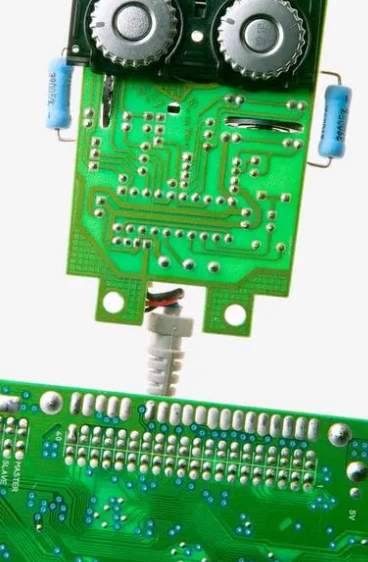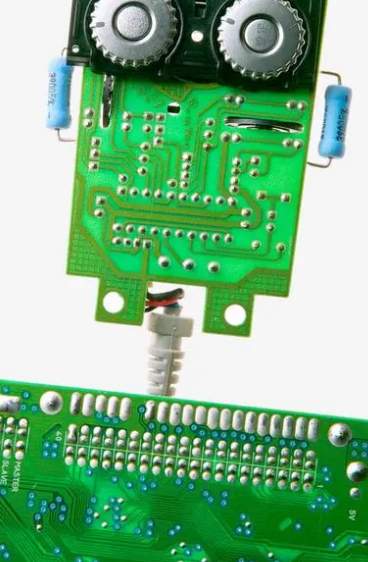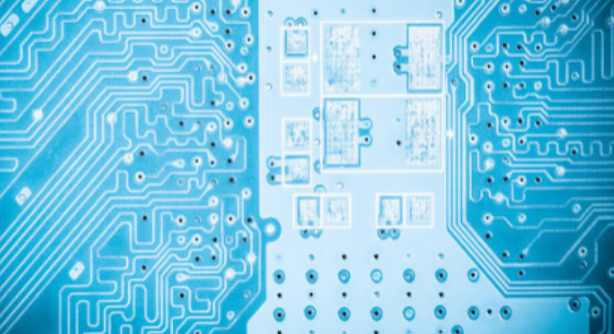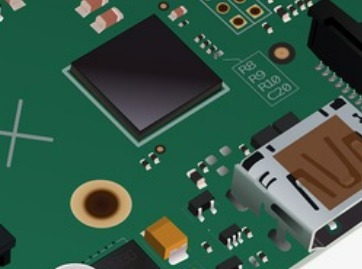
In PCB, EMI can be produced for many reasons, such as: RF current, common mode level, ground loop, impedance mismatch, magnetic flux... Etc. In order to master EMI, we need to understand these causes and their effects step by step. Although we can learn the mathematical basis of EMI phenomenon directly from electromagnetic theory, it is a hard and long road. For the average engineer, a simple and clear description is even more important. In this paper, we will discuss the "source of electricity" on PCB, the application of Maxwell equation, and the concept of magnetic flux minimization.
In contrast to the source of magnetism, the source of electricity is the time-varying electric dipole model. This means that two separate, time-varying point charges of opposite polarity are adjacent to each other. Both ends of the bipolar contain changes in charge. This change in charge is caused by the constant flow of current over the entire length of the bipolar. The circuit, which uses the oscillator output signal to drive an unterminated (terminated) antenna, can be used to represent the source of electricity. However, this circuit cannot be explained by applying the circuit principle of low frequency. Regardless of the finite propagation speed of the signal in this circuit (which is based on the dielectric constant of the non-magnetic material), the RF current will be generated in this circuit. This is because the speed of propagation is finite, not infinite. The assumption is that the wire contains the same voltage at all points, and that the circuit is instantaneously balanced at any point. The electromagnetic field produced by this source of electricity is a function of four variables:

1. Current amplitude in the loop: The electromagnetic field is proportional to the current flow in the bipolar.
2. The relationship between the polarity of the bipolar and the measuring device: As with the magnetic source, the polarity of the bipolar must be the same as that of the antenna of the measuring device.
3. Size of the bipolar: The electromagnetic field is proportional to the length of the current assembly, but the length of the line must be only a fraction of the wavelength. The larger the bipolar, the lower the frequency measured at the antenna end. For a particular size, the antenna will resonate at a particular frequency.
4. Distance: Electric and magnetic fields are related to each other. The strength of the two is proportional to the distance. In the far field, which behaves like a loop source (the source of magnetism), an electromagnetic plane wave occurs. The distance dependence of electric and magnetic fields increases as you approach a "point source".
The relationship between the near field (magnetic and electrical components) and the far field is shown in FIG. 1. All waves are a combination of magnetic and electric components. This combination is called the "PoynTIng vector." In fact, there is no single radio or magnetic wave. We can measure a plane wave because a small antenna's wavefront looks like a plane at a distance of several wavelengths from the source.
This appearance is the physical "contour" observed by the antenna; It is like drifting from a river to a river. The waves we see are ripples. Field propagation is the point source of the field, radiating outward at the speed of light. Among them,. The electric field component is measured in V/m and the magnetic field component is measured in A/m. The ratio of electric field (E) to magnetic field (H) is the impedance in free space. It must be emphasized here that in a plane wave, the wave impedance, Z0, or the characteristic impedance of free space, is independent of distance and independent of the characteristics of the point source. For a plane wave in free space:
The unit of energy carried by the wave front is
The unit of energy carried by the wave front is watts/m2.
For most applications of Maxwell's equations, noise coupling methods can represent models of equivalent components. For example, a time-varying electric field between two conductors can represent a capacitor. Between the same two conductors, a time-varying magnetic field may represent mutual inductance. FIG. 2 shows the two noise coupling mechanisms.
The unit of energy carried by the wave front is
For this noise coupling method to be correct, the actual size of the circuit must be smaller than the wavelength of the signal. If this model is not really correct, the lumped component can still be used to illustrate the EMC for the following reasons:
1. Maxwell equation cannot be directly applied in most real situations, because of complex boundary conditions. The lumped model is incorrect if we are not confident in its approximate accuracy. However, most lumped components (or discrete components) are reliable.
2. Numerical models do not show how noise is generated according to system parameters. Even though a model may be the answer, the parameters associated with the system cannot be predicted, identified, or revealed. Of all the models available, the model built by the lumped component is the best.









